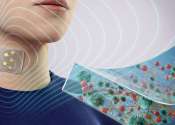Microscopic robots 'walk' thanks to laser tech
A Cornell University-led collaboration has created the first microscopic robots that incorporate semiconductor components, allowing them to be controlled—and made to walk—with standard electronic signals.
Aug 26, 2020
0
204









